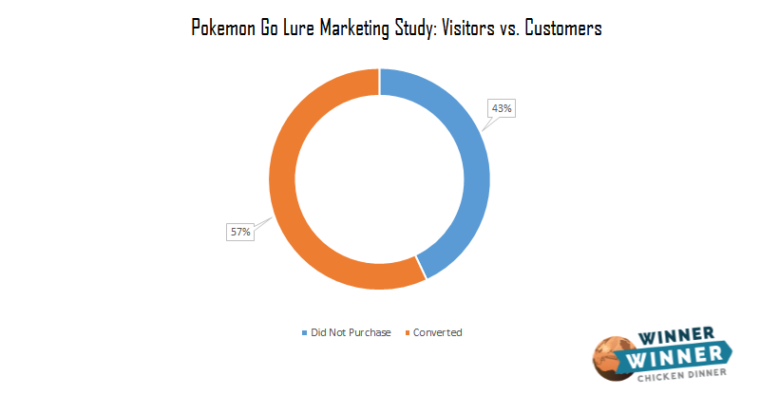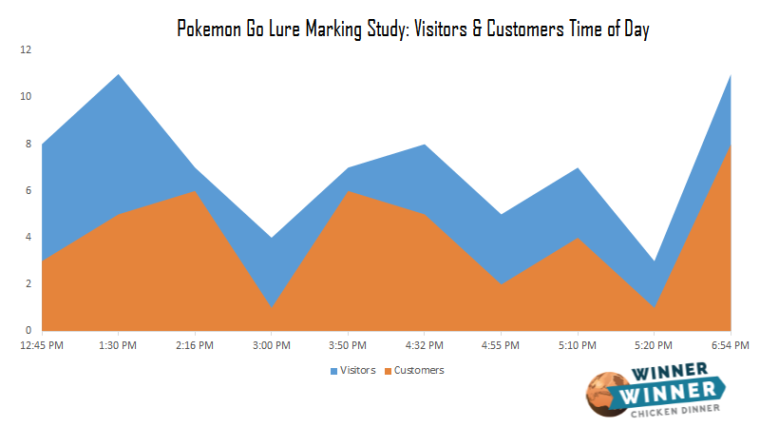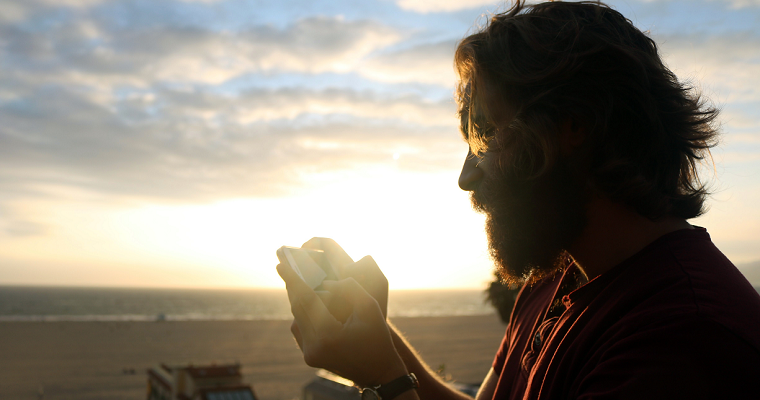Pokémon Go’s popularity has been well documented. The Augmented Reality game revolves around gamers moving through their city, region, and the world to catch Pokémon in the wild. The impact the game has had on Parks has been astounding and has led to various enterprising folks setting up small snack and beverage stands to cash in.
However, the reactions by local businesses to the phenomenon have been mixed. Some have claimed to see no impact, others claim it’s only their current customers, and some even doubt the game has had any effect whatsoever on their business.
The hype around the game led Nintendo to break the single-day trading record for the century in Tokyo (even though they didn’t make the game) and has some analysts speculating that it’s a $3 billion value to Apple from the 30% cut they take on in-game purchases. Those kinds of numbers have already undoubtedly attracted competition into the space, with rumors of titles such as Harry Potter, Star Trek, Star Wars, and Batman in the works.
With all of this hype we know the big players; Niantec, The Pokémon Company, Nintendo, Apple, and Google are set to make some good financial returns, but what about the little guys? We at Winner Winner Chicken Dinner conducted a study with small locally based retailer Anime Pop to see if there was an actual measurable impact.
Our Pokémon Go Lure Marketing Study (link to full study on our site) showed amazing results for the retailers. Not only did they see increased foot traffic, but they were also seeing increases in retail sales from the new visitors to their store.
Let’s back up and cover some mechanics of the game. In Pokémon Go, there are two types of virtual locations: Pokéstops and Gyms. The two are very different and play vastly different roles within the game.
Pokéstops are small shops located inside of the game that gives out items at random players can use, while Gyms are where the players break into teams, train, and battle their Pokémon. There are a variety of items that are useful in the game that players can randomly get at a Pokéstop, and they can visit a Pokéstop once every five minutes.
One of those items is called a Lure Module or just known as a Lure. This is the item our team set out to research in this study, as the Lure Module can only be used at a Pokéstop, attracts new Pokémon (the little monsters gamers are trying to find), and lasts for about 30 minutes. Lure modules can be found in the game but can also be purchased for about $1/each.
We hypothesized that given the right mixture of a business having a Pokéstop, an active Lure on that Pokéstop, and selling a product/service that would entice Pokémon Go players to purchase, we would see a rise in foot traffic that leads to added revenue at the related business location.
Anime Pop itself was selected by Niantec’s original gamers years ago and has the distinct privilege of being a Pokéstop and selling related merchandise, though a majority of their physical store is non-Pokémon products geared towards die-hard anime fans of other shows such as Mobile Suit Gundam, Cowboy Bebop, and Inuyasha.
The Anime Pop experiment shows that 57% of new, game playing customers, to their retail location in Addison, Texas, made a purchase. With an average value of $40 per person, that added $1,640 to the store’s revenues over the weekend with an ROI of 16,300% thanks to the low cost of buying a Lure in the game.

The study also discovered that over the weekend the best times to attract new Pokémon Go players to your location with a Lure Module are between 1:30 pm to 4:30 pm and 5:30 pm to 7:00 pm.

What Does This Pokémon Go Study Mean?
This study used a retail store that sells Pokémon merchandise among other things. They said they have seen increases in sales across their product lines and not only Pokémon products. What we draw from this is that as Pokémon Go players are traveling around their city, they are likely to make a purchase in the right environment.
However, the 57% number could be the high-end of conversions for visitors into customers. Experiment in your own business with various messaging, track responses and revenues, and see if you can optimize for this. Even if you think Pokémon Go is a bad fit for your business, it’s still worth an experiment as more Augmented/Mixed Reality experiences are likely to come around soon, and you want to be ready and able to optimize for them.
Image Credits
Featured Image: Lesly B. Juarez/Unsplash
In-post Photos: All images by Joe Youngblood





